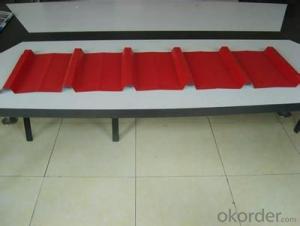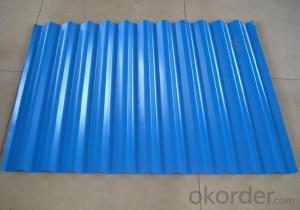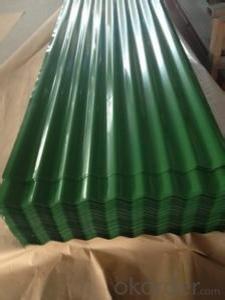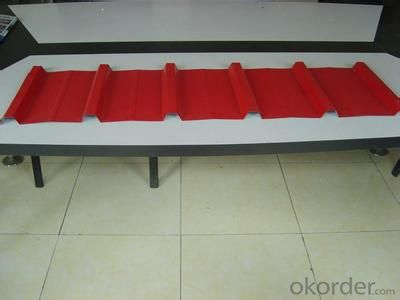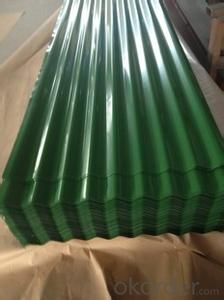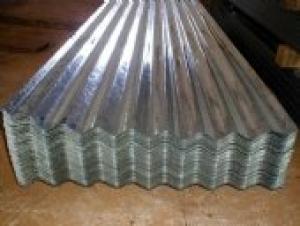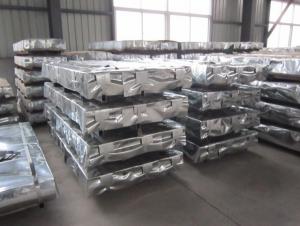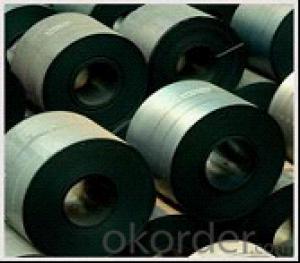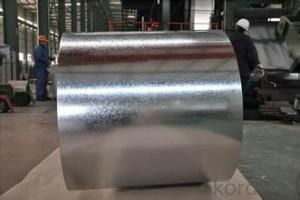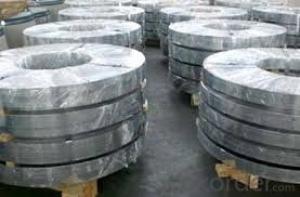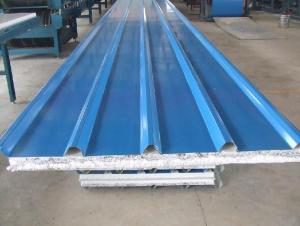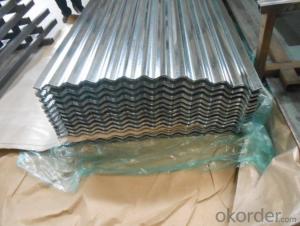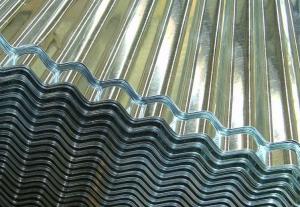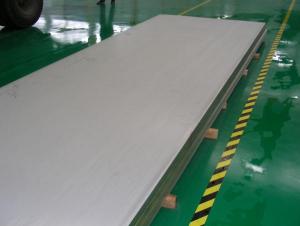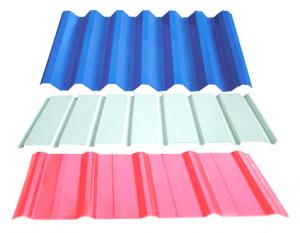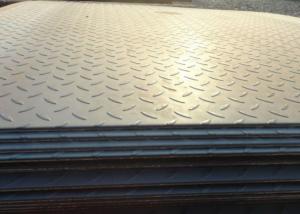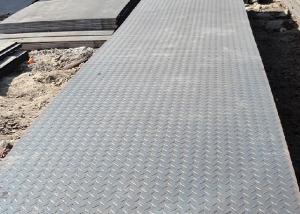COATED GALVANIZED STEEL CORRUGATED SHEETS
- Loading Port:
- Tianjin
- Payment Terms:
- TT OR LC
- Min Order Qty:
- -
- Supply Capability:
- 10000 m.t./month
OKorder Service Pledge
OKorder Financial Service
You Might Also Like
PRE-PAINTED GALVANIZED STEEL CORRUGATED SHEETS
THICKNESS:0.30mm/0.35mm/0.4mm
1.WIDTH:820mm (0/+5mm, AFTER CORRUGATION)
2.LENGTH:3000mm (0/+5mm), 5800mm (0/+5mm)
3.ZINC COATING:60g/m2
4.STANDARD:JIS G 3312, CGCC (SOFT QUALITY)
5.TOP COATING:5+15 MICRON(POLYESTER); BACK COATING:5-7 MICRON (EPOXY),LIGHT GREY
6.COLOR:RAL3013 (RED TOMATO)
7.PACKAGE WEIGHT:3-3.5tons
8.TOLERANCE: -/+5 % TOLERANCE WITH QTY AND AMOUNT (THICKNESS:-/+0.02mm; WIDTH:0/+5mm; ZINC COATING:-/+10g/m2; COATING MASS THICKNESS:-/+ 2 MICRON)
9.PROFILE IS ATTACHED TO BE CONFIRMED

- Q: Can the steel sheets be easily formed into decorative panels?
- Yes, steel sheets can be easily formed into decorative panels.
- Q: What are the different types of steel sheet coatings available?
- There are several types of steel sheet coatings available, including galvanized, galvalume, tinplate, aluminized, and stainless steel coatings.
- Q: Are the steel sheets suitable for outdoor signage?
- Indeed, outdoor signage can indeed be made from steel sheets. Steel is renowned for its robustness, endurance, and ability to resist various weather conditions. It is capable of enduring severe outdoor environments, such as extreme temperatures, rain, wind, and sunlight, without distorting or deteriorating. Modifying the thickness of the steel sheets can provide stability and durability to the signage, depending on its size and design. Furthermore, steel sheets can be effortlessly personalized and painted to align with the desired visual appeal, making them a favored option for outdoor signage ventures.
- Q: What is steel concrete?
- Steel reinforced concrete (Steel Reinforeed Concrete, referred to as SRC) refers to the concrete structure of main steel, and is equipped with a longitudinal and transverse stirrup reinforcement structure, is a main form of steel and concrete composite structure.
- Q: How are steel sheets protected from rust and corrosion?
- Steel sheets are protected from rust and corrosion through various methods and coatings. One common method is the application of a protective layer called galvanized coating. This involves immersing the steel sheets in a bath of molten zinc, which creates a barrier between the steel and the surrounding environment. The zinc coating acts as a sacrificial anode, meaning that it corrodes first before the steel does. This sacrificial protection prevents rust and corrosion from reaching the steel surface. Another method of protection is through the application of organic coatings such as paint. These coatings provide a physical barrier between the steel and the external environment, preventing moisture and other corrosive elements from coming into contact with the metal. The paint can be applied using various techniques, including spray, roll, or electrostatic deposition. In addition to galvanized coatings and paint, steel sheets can also be protected through the use of other coatings such as epoxy or polyurethane. These coatings provide enhanced protection against corrosion, especially in harsh environments or when the steel sheets are exposed to chemicals or abrasive materials. Regular maintenance and inspections are also crucial in preventing rust and corrosion on steel sheets. This includes cleaning the surface, removing any debris or contaminants, and repairing any damaged or worn-out coatings. By following these preventive measures, steel sheets can remain protected and maintain their structural integrity for a longer lifespan.
- Q: Are the steel sheets suitable for outdoor sculptures?
- Yes, steel sheets are suitable for outdoor sculptures. Steel is a durable and weather-resistant material, making it ideal for withstanding the elements in an outdoor environment. It is able to endure extreme temperatures, moisture, and UV radiation without deteriorating or losing its structural integrity. Additionally, steel sheets can be easily manipulated and shaped into various forms, allowing for endless possibilities in creating outdoor sculptures. Its strength and stability also make it capable of supporting larger and more intricate designs. Overall, steel sheets are a popular choice among artists and sculptors for creating outdoor sculptures due to their durability, versatility, and ability to withstand the harsh outdoor conditions.
- Q: Can steel sheets be perforated for ventilation purposes?
- Yes, steel sheets can be perforated for ventilation purposes. Perforations can be made in steel sheets to allow airflow and improve ventilation in various applications such as HVAC systems, architectural designs, industrial equipment, and more.
- Q: What are the different methods of protecting steel sheets from graffiti?
- There are several methods of protecting steel sheets from graffiti, including anti-graffiti coatings, sacrificial coatings, and physical barriers. Anti-graffiti coatings are specially formulated to provide a protective layer over the steel surface, making it easier to remove graffiti without damaging the underlying material. Sacrificial coatings involve applying a removable layer of protective coating that can be easily replaced once graffiti occurs. Physical barriers, such as fences or screens, can also be installed to prevent direct access to the steel sheets, making it harder for graffiti to be applied in the first place.
- Q: Can steel sheets be galvanized or coated with protective layers?
- Yes, steel sheets can be galvanized or coated with protective layers. Galvanizing is a process of applying a protective zinc coating to steel to prevent it from rusting. This is achieved by either hot-dip galvanizing, where the steel sheet is immersed in a bath of molten zinc, or by electroplating, which involves applying a zinc coating through an electrolytic process. In addition to galvanizing, steel sheets can also be coated with various protective layers. These coatings can include paint, epoxy, powder coatings, or other specialized coatings designed to enhance resistance to corrosion, chemicals, or abrasion. These protective coatings not only provide an aesthetic appeal but also serve as a barrier against environmental factors that could potentially damage the steel. The choice of galvanizing or coating a steel sheet depends on the specific application and the level of protection required. Galvanizing offers excellent corrosion resistance and is commonly used in outdoor applications where the steel is exposed to moisture, such as construction, automotive, and infrastructure industries. Coatings, on the other hand, provide a wide range of protective properties, making them suitable for various applications, including indoor environments or where specific chemical resistance is required. Ultimately, both galvanizing and coating steel sheets with protective layers are effective methods to enhance their durability and prolong their lifespan. The selection of the appropriate method depends on factors such as the intended use, environmental conditions, and budget.
- Q: What are the different types of steel sheet coatings?
- There are several different types of steel sheet coatings, including galvanized coatings, tin coatings, and polymer coatings.
Send your message to us
COATED GALVANIZED STEEL CORRUGATED SHEETS
- Loading Port:
- Tianjin
- Payment Terms:
- TT OR LC
- Min Order Qty:
- -
- Supply Capability:
- 10000 m.t./month
OKorder Service Pledge
OKorder Financial Service
Similar products
Hot products
Hot Searches
Related keywords
